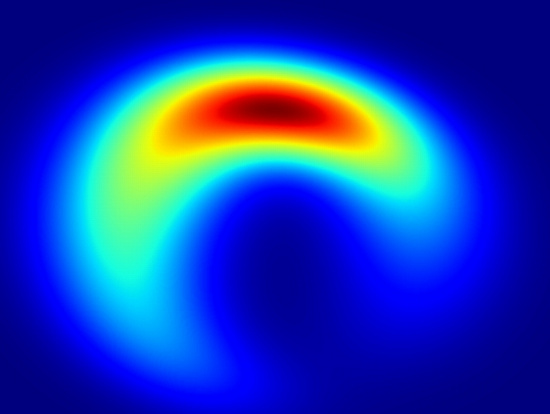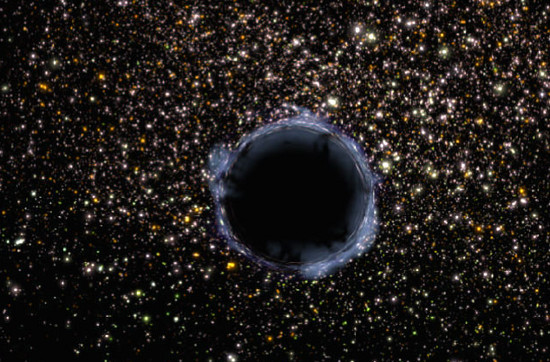New conjecture about the shape of a black hole
Astronomers have just published their first speculative images of the shape of a black hole, very different from previous illustrations.
In fact, black holes cannot be seen, even when light can escape their gravitational pull. However, scientists believe that the boundaries around a black hole (the boundary that everything, including light, cannot overcome the gravitational pull of a black hole to return to the universe, or otherwise is an 'event horizon' that can be seen by radiation emitted by the material it absorbs.

Astronomers believe that black holes are actually crescent-shaped .
This concept is a premise for researcher Ayman Bin Kamruddin of the University of California to create an image of speculation about the shape of a black hole, and present it at the 221st meeting of the American Astronomical Society. In new speculative photographs, a black hole, or more precisely, the boundaries around it, have a crescent shape rather than a sphere like the prevailing concept.
Mr. Kamruddin's illustration is not entirely arbitrary, it is based on a model for astronomers' interpretation of images.
A new project called 'Event Horizon Telescope' will combine the observation of a worldwide radio telescope network to gather information about extremely small objects in the universe.

. not a sphere like a long-standing popular concept. (Photo: Reuters)
This project has now assembled the initial measurement results of the black hole Sagittarius A * located in the center of our Milky Way galaxy. Researchers have tried to import these data into many different models and find them best suited for photos for crescent shapes.
Astronomers explain that the center of the crescent is a dark circle that represents the black hole itself, while the crescent reflects the disk around the material being sucked in by the black hole.
Until now, researchers have not had the technology to prove their hypothesis. They hope to be able to use the first speculative image of the black hole Sagittarius A * to demonstrate certain aspects, which have not yet been validated in general gravitational theory.
- The first opportunity to admire the super black hole
- Discover the mystery of the most exotic black holes in the universe
- Detecting solar black holes 6 times the diameter of the Earth
- 740 million light years away is a completely different universe of black holes
- Discovering 'super black holes' is 12 times bigger than the Sun.
- Evidence of the power of black holes
- Black hole detection
- Video: Top 5 biggest black holes discovered by NASA in 2017
- The galaxy's giant black hole
- The first time I took a picture of a black hole three million times bigger than Earth
- Monster black hole 'belching' twice after swallowing gas
- The first time a black hole was discovered, it swallowed a star
 Van Allen's belt and evidence that the Apollo 11 mission to the Moon was myth
Van Allen's belt and evidence that the Apollo 11 mission to the Moon was myth The levels of civilization in the universe (Kardashev scale)
The levels of civilization in the universe (Kardashev scale) Today Mars, the sun and the Earth are aligned
Today Mars, the sun and the Earth are aligned The Amazon owner announced a secret plan to build a space base for thousands of people
The Amazon owner announced a secret plan to build a space base for thousands of people